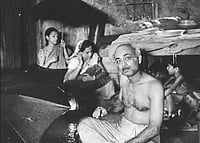December 19 marks the day Goa was liberated from Portuguese rule after four and a half centuries and was united with the Republic of India. In all of its natural, cultural, and sensory glory, the coastal state comes alive on Goa Liberation Day to celebrate with the Indian tricolour unfurled at every corner of the state, Goan specialities whipped up with families coming together, and paying homage to the martyrs who fought for the Independence.
The air is rich with the fragrance of the state's celebration of its heritage and the Indian flag which serves as a poignant reminder of the unity that the freedom struggle blessed the picturesque state.
History Of Goa's Liberation
On this day in 1961, the Indian forces took control of the states of Goa and Daman and Diu, ending Portuguese rule which stretched through four centuries. When Prime Minister Jawaharlal Nehru wanted to negotiate with the Portuguese government regarding the transfer of power to Independent India, he was turned down by the Portuguese who cited the reasons: Goa and the other exclaves under the Portuguese rule were not colonies but constituents of metropolitan Portugal, and the fact that when Portugal took control of Goa, the Indian Republic did not exist. Portugal’s refusal to cede Goa was also backed by the rationale of the coastal state’s cultural and religious individuality.
Diplomatic tools came into play in 1950, with the Indian government initiating negotiations with the Portuguese government. A collapse of talks led to the imposition of travel restrictions from Goa leading to transportation immobilisation between Goa and the other Portuguese states. This was followed by sanctions on the Portuguese government and the shutting down of the Consul Office in Goa.
Over the next few years, numerous incidents precipitated which ultimately streamlined Nehru’s options, including the Sabarmati passenger boat incident in 1961 which saw Portuguese ground troops opening fire resulting in the death of a civilian. Although Nehru’s decision to use military coercion was met with resistance from quarters, he considered Goa’s continuation under Portuguese rule to be "an impossibility".
Ultimately, following failed rounds of deliberation, political pressure from across the world and impotent discussions surrounding referendums, Nehru decided to march into Goa to seize control. Nehru’s decision to launch Operation Vijay came out of realised urgency after years of diplomatic efforts and more than a decade into India’s independence. The operation saw the Indian Army marching into the districts of Goa, Daman and Diu and Dadra and Nagar Haveli, constituting the Estado da India and launching air, sea and land strikes. Goa found a new military Governor in Kunhiraman Palat Candeth with the civilian government taking over in 1962.
Significance Of Goa's Liberation
Celebrated with fervour and pride, Goa Liberation Day marks the liberation of the naturally-blessed paradise from centuries of Portuguese rule. The day arrives as a significant reminder of Goa’s rich cultural history and a celebration of the spirit, harmony, and resilience of the Goan people through years of struggle.
Goa Liberation Day is a day etched in the state’s unique cultural and political history. Homage is paid to the pioneers of the Goan independence movement like Tristão de Bragança Cunha, also known as the Father of Goan Nationalism.
Numerous initiatives were taken to mark the day including a Women’s and Youth Parliament in 2021. The Women's Parliament, which was organised on the completion of 60 years of Goa's independence with the idea of celebrating the role of women in shaping a thriving democracy, witnessed more than 5,000 women participating in discussions surrounding women in politics and inclusive government and growth, while the National Youth Parliament focused on the need for engagement of youth in democratic and political spheres.
Goa's museums too stand as testimonies to the history and the heritage of the state. Some fine examples of the museums in the state are: The Aguad Interactive Museum at the Aguad Port and Jail Complex in Sinquerim, which paints pictures of the three distinct sections: The Land, The Struggle and The People, and the Goa State Museum in Panjim, which gives one a peek into the local culture and history of the land.



























